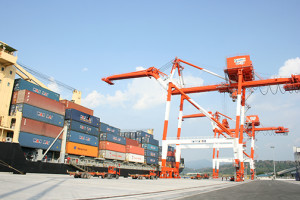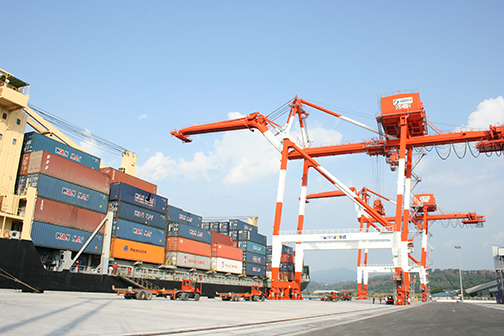
President Benigno Aquino III has officially declared the ports of Batangas and Subic as extension of Manila ports during port congestion and other emergency cases.
Aquino signed Executive Order No. 172 on September 13, designating Port of Batangas and the Subic Bay Freeport as extensions of Manila ports, “whenever there is congestion” in the country’s main gateway, or “in case of emergency situations affecting public interest such as, but not limited to, strikes or lock-outs and natural calamities, resulting in serious disruptions in port operations.”
EO 172 acknowledged that port congestion is “one of the major factors hindering the free flow of goods and services passing through the ports, with its domino effects immediately cascading and impacting on the demand-supply chain and eventually to the country’s economic growth and performance.”
It also noted that the past six months have witnessed how port congestion at the Port of Manila, specifically, the Manila International Container Terminal (MICT) and the South Harbor, “have tremendously disrupted industries and businesses not only in Metro Manila but across the country, and how it has highlighted the important and crucial role that the government has to play in mitigating its impact and finding immediate solutions.
“The drastic restriction in the movement of trucks transporting cargoes in and out of the Port of Manila because of the shortened operating window of trucks due to truck ban imposed by certain Local Government Units resulted in the abnormal movement, accumulation and piling up of cargoes and eventually severe port congestion.”
The Manila truck ban, lifted over the weekend by Manila Mayor Joseph Estrada, has been blamed by many sectors as the cause of congestion at Manila ports.
EO 172 declared that the Port of Batangas and the Subic Bay Freeport are not only ports of closest proximity to Manila ports, “but have the required capacity to handle export and import cargoes in terms of equipment, manpower and berth.”
Under the order, foreign vessels with Port of Manila as the port of destination or origin may be directed to berth either at the Port of Batangas or Subic Bay Freeport, with berthing at the two ports also considered as berthing at the Port of Manila.
All rules being enforced at the Port of Batangas or Subic Bay Freeport as promulgated by the Philippine Ports Authority (PPA) and Subic Bay Metropolitan Authority (SBMA), respectively, including berthing and other port fees, among others, shall apply to foreign vessels directed to berth at the facilities, the EO said.
The existence of port congestion or emergency cases will be determined by the secretary of the Department of Transportation and Communications upon the recommendation of the Board of Directors of PPA.
The order to lift the extension of Manila ports to Batangas and Subic will also be determined by the transport secretary
PPA and SBMA had earlier signed a memorandum of agreement designating Subic’s New Container Terminal 2 as Manila Port’s extension. – Roumina Pablo





